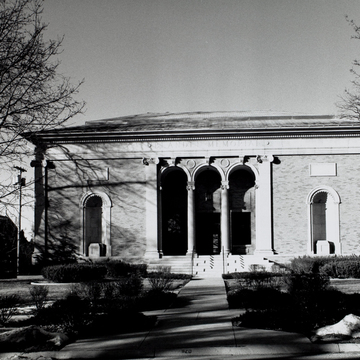The Fort Dodge architect E. O. Damon, responding to the taste of the time, utilized the mid-fifteenth-century Italian Renaissance mode as his point of departure. This was in deference to his patron, Charles Blanden, who had indicated to his architect his fondness for the Butler Institute of American Art at Youngstown, Ohio. A groin-vaulted three-arched loggia is flanked by blank walls. Each of these walls contains a niche with a seashell half dome. The tripartite division of the entrance facade is reinforced by Ionic pilasters that support a wide, carefully divided entablature and cornice. The building is idyllically situated within a park, which enhances its public character; the surrounding trees and shrubs bring out its small scale and intimate details.
You are here
Blanden Memorial Art Gallery
If SAH Archipedia has been useful to you, please consider supporting it.
SAH Archipedia tells the story of the United States through its buildings, landscapes, and cities. This freely available resource empowers the public with authoritative knowledge that deepens their understanding and appreciation of the built environment. But the Society of Architectural Historians, which created SAH Archipedia with University of Virginia Press, needs your support to maintain the high-caliber research, writing, photography, cartography, editing, design, and programming that make SAH Archipedia a trusted online resource available to all who value the history of place, heritage tourism, and learning.














